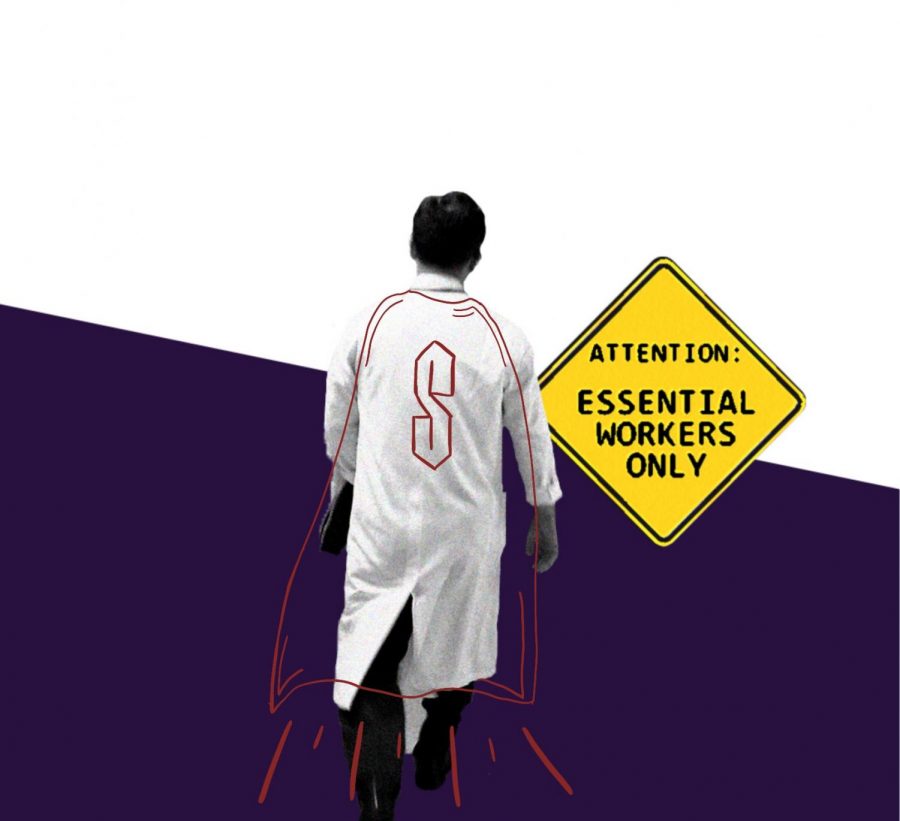On Jan. 25, STLtoday.com’s Question of the Day posed a simple poll: “In which conference do you think the Billikens should play?” The two possible answers respondents were provided with were the Atlantic 10 and Missouri Valley conferences. To my surprise, an overwhelming 74 percent of respondents answered in favor of the latter, meaning they would prefer Saint Louis University to leave its current conference, the A-10, for the Missouri Valley.
The timing of this question is by no means spontaneous. Several recent comments made by SLU head basketball coach Rick Majerus have brought SLU’s affiliation with the A-10 into the spotlight. Majerus has used mostly all of his recent time in the public sphere to share his opinion on SLU’s current conference—an opinion that is not exactly positive.
“We belong in the Missouri Valley if we care about the kids’ academics,” Majerus said, after a game against Fordham University in which SLU won easily. Majerus used the post-game press conference as a chance to express his views on the conference situation, rather than discuss his team’s thorough thrashing of the bottom-dwelling Rams. Majerus cited the difficult and expensive travel schedule that the team must handle during A-10 play as being his main concern. As most teams in the A-10 are located on the east coast, the travel can be quite taxing on some of the players.
This press conference was not the only pulpit that Majerus used as a soapbox recently. During his now-cancelled radio show on 101.1 ESPN, Majerus used a significant amount of the 35 minutes he spent on the show contrasting the two conferences. Again, Majerus pointed to SLU’s geographical isolation from the rest of the teams as a large problem.
“With all of the travel, after three weeks of class [in the spring semester] the [players] have only made it to six out of 14 days of classes,” Majerus said.
Majerus also claimed that SLU’s location hinders any rivalries, which are normally geographically influenced. “What rivalry do we have? Dayton or Xavier? They sure don’t consider us to be rivals,” the coach said.
SLU’s Department of Athletics has thus far treated the coach’s comments as a non-issue. The University is adamant that a conference change is not going to happen any time soon.
However, the buzz created by Majerus is certainly worth a Billiken fan’s attention, and if the aforementioned poll carries any weight, many of those fans seem to agree with SLU’s most famous employee. Bernie Miklasz, a columnist for the St. Louis Post-Dispatch and personality for ESPN 101.1, has voiced his opinion on the issue, both on his blog and radio show. He agrees with Majerus, believing that the Missouri Valley is a better fit for the Billikens.
I admitted earlier that the nearly three-fourths response in favor of the Missouri Valley shocked me. To me, a transfer into the Missouri Valley Conference would be a significant step backward for a program that is on the path to prominence.
First, I’ll tackle the main argument against the A-10—the geographic distance between SLU and its fellow A-10 schools. Admittedly, this isn’t a great situation. It can be hard for people to get worked up about a match-up between the Billikens and a team as far away as Rhode Island University or St. Bonaventure University; the Bonnie’s campus in Olean, NY is over 700 miles away.
More importantly, the strain placed on SLU student-athletes by the extensive traveling is a problem. However, this is not a unique problem, or specific to SLU by any means. Every university or college that offers athletics has to cope with the problem of constant travel. And some schools, such as Marquette University, a fellow Jesuit institute and member of the Big East Conference, arguably have a tougher travel schedule than SLU. Marquette, located in Milwaukee, Wisc. must routinely travel to schools such as Georgetown University in our nation’s capital. Marquette is a school of comparable size and academic quality to SLU that appears to handle this problem with few complaints of its affiliation in the Big East. Universities utilize a variety of resources to aid their student-athletes in their academic lives. Tutors are readily available. Professors allow make-up work and exams. Most collegiate teams require some form of study hours for their students. Again, this is not a unique problem to SLU.
As far as the lack of rivalries goes, this is a problem that can be easily fixed. The simple solution is winning. Teams such as Dayton and Xavier may scoff at SLU’s supposed rivalry now, but if SLU can manage to knock one or two of these conference powers out of the A-10 tournament and possibly even ruin their NCAA tournament hopes, a rivalry will be soon to follow. Remember, SLU has only been playing basketball in the A-10 since the 2006 season. Schools don’t become rivals overnight. With a little bit of time, and some winning, this league can be rife with rivals for SLU.
And no offense to the Missouri Valley, but I don’t see any rivals, with the exception of fellow Jesuit institution Creighton University, jumping out at me. I don’t really see people getting any more excited about a match-up against Indiana State or Wichita than they do for Fordham or Duquesne. SLU already plays the geographically proximal schools such as Missouri State and Southern Illinois pretty regularly in non-conference play, so I don’t see how the rivalry situation would improve with a switch at all.
Finally, the biggest reason for SLU to remain in the A-10 is prestige, plain and simple. The A-10 simply offers a higher level of competition and exposure that the Missouri Valley does not. This week, Joe Lunardi of ESPN.com listed five A-10 teams heading to the ‘big dance’ in his most recent version of Bracketology. There was even a sixth team, Charlotte, listed as “on the bubble.” Only one team, Northern Iowa, from the Missouri Valley made the cut. The Atlantic has consistently been the mid-major basketball conference. It even has a chance to have more teams make the tournament this year than two BCS conferences, the Pac-10 and the Big-10, who Lunardi currently lists with four and two teams making it to the tourney.
SLU has invested a lot of money into this program in the hopes of building a national power. A big-name coach like Majerus and a top-of-the-line facility like Chaifetz Arena deserve a big-time program. The Atlantic may not be a perfect fit for SLU, but it certainly is the best.
Categories:
Atlantic 10 isn’t perfect, but it’s the best for SLU
Bobby Schindler
•
January 28, 2010
0
Donate to The University News
$2185
$5000
Contributed
Our Goal
Your donation will support the student journalists of Saint Louis University.
More to Discover














